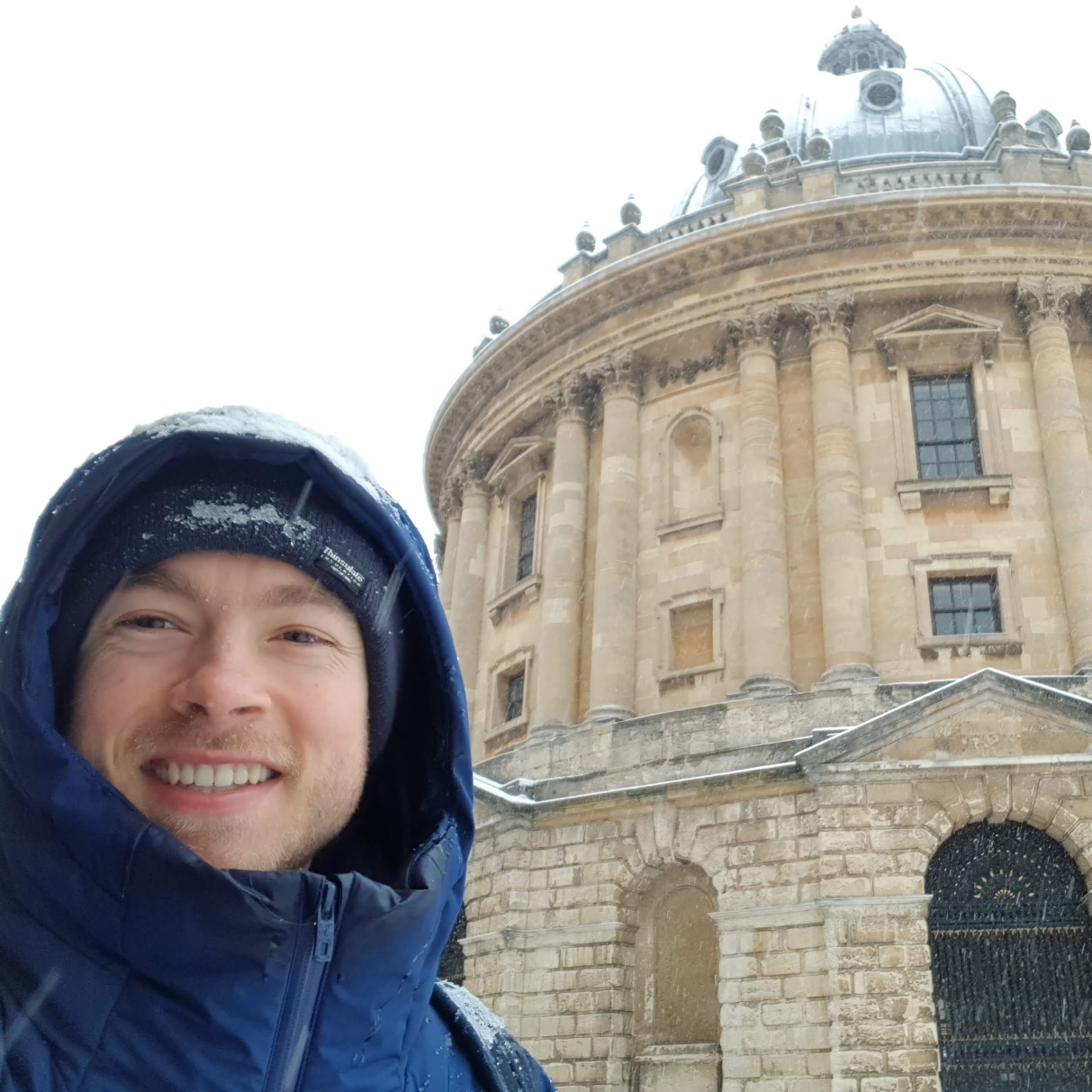Enriched cohesive infinity toposes
I gave a talk in the Advanced Topology Class at Oxford about “Generalized Differential Cohomology” based on this book. Part of the talk required setting up an “enriched cohesive \(\infty\)-topos”. Here’s an outline of what that object could be and what it does.
The definition
Recall, an \(V\)-enriched topos is a reflective subcategory of a category of \(V\)-presheafs with left exact reflector. Replacing “categories” by “\(\infty\)-categories” should similarly define a \(V\)-enriched \(\infty\)-topos.
Example. Stable \(\infty\)-categories are exactly spectra-enriched \(\infty\)-topoi.
Every \(V\)-enriched (\(\infty\)-)topos \(T\) has a global section functor given by the homs out of the terminal object \(\ast\), and usually defnied by \(\Gamma_\ast \equiv \mathrm{Hom}(\ast,-) : T \to V\). This has a left adjoint \(\Gamma_\ast : V \to T\) called the constant sheaf functor. Together these functors form the (\(V\)-enriched) terminal geometric morphism.
Now, a \(V\)-enriched \(\infty\)-topos is cohesive if the constanst sheaf functor has a further left adjoint (the geometric realization functor \(\Gamma_{!}\)), and the global section functor has a further right adjoint (the codiscrete functor \(\Gamma^{!}\)), satisfying the following properties (both of which will be revisited in our example below): geometric realization must preserve finite products, and both the constant sheaf functor and the codiscrete functor must be fully faithful.
The example
To see what an enriched cohesive \(\infty\)-topos does, let’s run through an example. The example we will consider will be a sheaf topos.
Remark. In ordinary 1-topos theory, 1-sheaf toposes (that is, categories of sheafs on a category with a Grothendieck topology, i.e. a site) corresponds to 1-toposes defined as left exact localizations of presheaf 1-toposes. However, in \(\infty\)-land it seems a bit more care needs to be taken (as Andre Henriques pointed out): it is only the so-called “topological localizations” that corresponds to Grothendieck topologies (see [2]). It is known that a general \(\infty\)-topos can at least be canonically presented as a topological followed by a “cotopological” localization (a cotopological localization localizes at “\(\infty\)-connected morphisms”). Rezk further notes in [2] that it seems to be an open question whether any \(\infty\)-topos can be presented as a topological localization of a presheaf category in some other way.
These difficulties aside, the example we will consider is the spectra-enriched cohesive \(\infty\)-sheaf topos of differential manifolds \(\mathrm{Sh}^{\mathcal{Sp}}(\mathsf{Mfld})\) (with Grothendieck topology given by the usual notion of open covers).
The global section functor
The terminal object is the presheafs represented by the terminal manifold, i.e. the point. By the Yoneda lemma, the global section functor is thus evaluation on the point. We write this as:
\[\Gamma_\ast = \mathrm{ev}_\ast : \mathrm{Sh}^{\mathcal{Sp}}(\mathsf{Mfld}) \to \mathcal{Sp}.\]The constant sheaf functor
To motivate the form of the constant sheaf functor, it makes sense to go back to “original idea” of a site, namely, the site of open sets on a topological space \(X\). In this case, the constant (\(\mathrm{Set}\)-valued) sheaf functor takes a Set \(S\) to the sheaf given by the trivial etale map \(p : X \times S \to X\). The resulting sheafs maps an open set \(U \subset X\) to the global sections of the restriction of \(p\) to \(U\); this is the cotensor \(S^{\pi_0 U}\) (where \(\pi_0 U\) are the connected components of \(U\)). In other word \(\Gamma^\ast\) is the sheaf mapping \(U \mapsto S^{\pi_0 U}\). This generalizes to our context of \(\infty\)-sheafs on manifolds with open covers as follows (see [1]): the constant sheaf functor
\[\Gamma^\ast : \mathcal{Sp} \to \mathrm{Sh}^{\mathcal{Sp}}(\mathsf{Mfld})\]maps \(S\) to the sheaf \(M \mapsto S^{\Pi_\infty M}\), where \(\Pi_\infty M\) is the underlying \(\infty\)-groupoid of \(M\), and \(S^{\Pi_\infty M}\) is the cotensor of spectra over spaces. (Andre Henriques points out that, heuristically, a similar observation should hold for many other types of “sheaves on categories of locally contractible topological things”.)
The geometric realization functor
The geometric realization functor is the left adjoint to the constant sheaf functor. We can compute that using coend calculus.
\[\begin{align} \mathrm{Sh}^{\mathcal{Sp}}(\mathsf{Mfld})(F,\Gamma^\ast S) &= \int_M \mathcal{Sp}(FM,S^{\Pi_\infty M}) \nonumber \\ &= \int_M \mathcal{Sp}(\Pi_\infty M \cdot FM,S) \nonumber \\ &= \mathcal{Sp}(\int^M \Pi_\infty M \cdot FM,S) \nonumber \end{align}\]Thus \(\Gamma_! M = \int^M \Pi_\infty M \cdot FM\) which indeed looks like the colimit computing a geometric realization (since manifold are glued together from simplices, it can be further rewritten as \(\Gamma_! M = \int^{\Delta^i} F \Delta^i\) and thus as \(\mathrm{colim}_{\Delta} F \Delta^i\)). As usual geometric realization preserves finite products.
The codiscrete functor
For our example it is not too hard to verify (see [1]) that the codiscrete functor is given by \(\Gamma^! S = S^{\mathrm{pt}(S)}\) where \(\mathrm{pt}(S)\) is the set of points of \(M\). In this sense, \(\Gamma^!\) extracts the “opposite” information from \(M\) than \(\Gamma^*\) does (instead of dropping the set, it drops the topology), and then cotensors \(S\) with it as before. More generally, the role of the codiscrete functor is to give us a notion of concrete objects in an cohesive \(\infty\)-topos.
References
[1] “Differential Cohomology: Categories, Characteristic Classes, and Connections”, Amabel + Debray + Haine, 2021
[2] “Lectures on Higher Topos Theory”, Rezk, 2019
